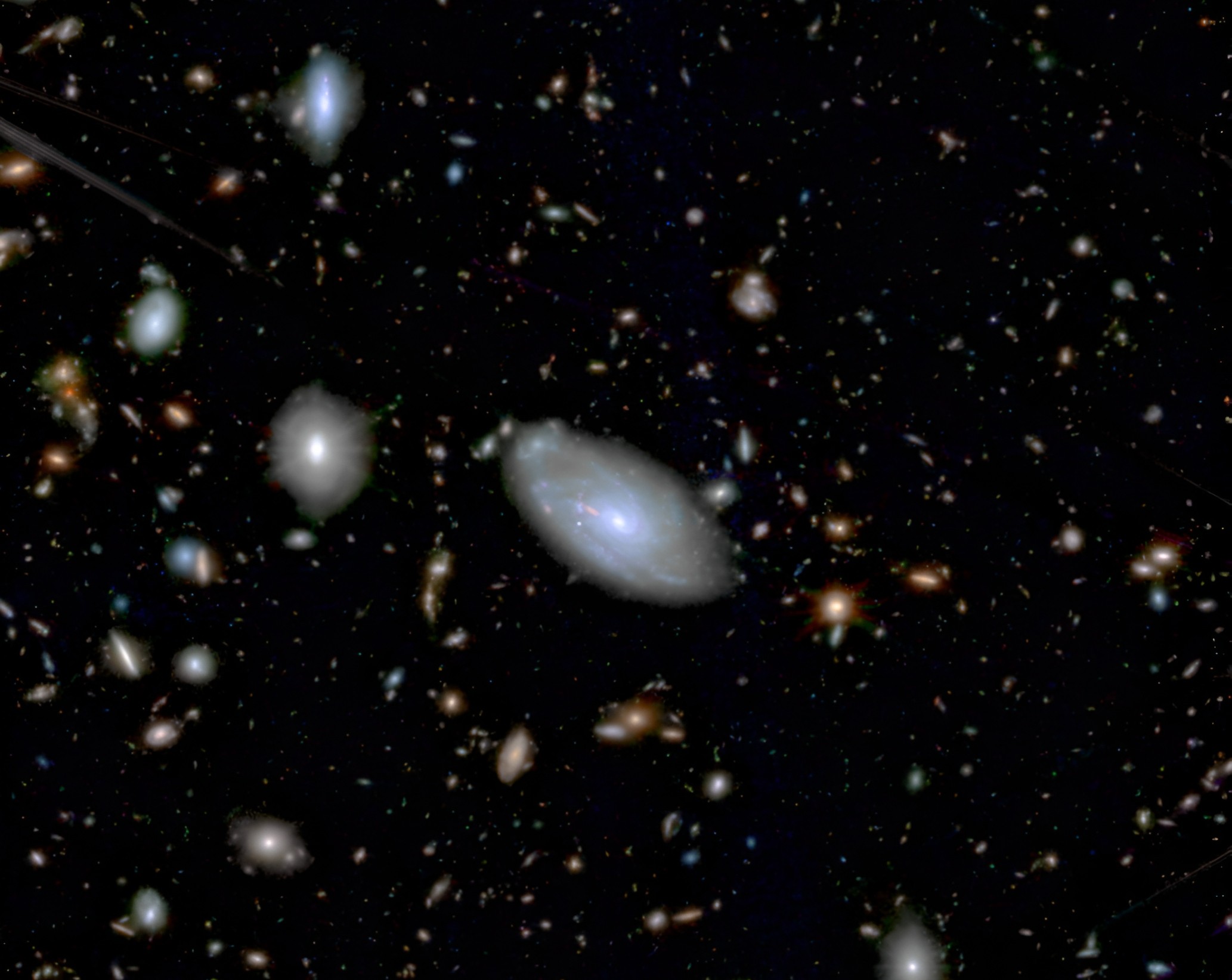Astronomers poring over new data from the James Webb Space Telescope have reported the most compelling hints yet that “dark stars,” cosmic behemoths fed by dark matter, really existed.
A new analysis of five ultra‑distant objects shows spectra and shapes that match simulations of dark stars rather than ordinary fusion‑powered suns.
The candidates sit more than 13 billion light‑years away, meaning their light left them when the universe was only a few hundred million years old.
The dark star concept was first introduced in 2007 by Katherine Freese and colleagues at the University of Texas at Austin.
Dark matter powering giant stars
Dark matter accounts for about 85 percent of the universe’s mass but reveals itself only through gravity. Two decades of underground detectors have yet to capture a single dark‑matter particle, yet its invisible pull sculpts galaxies and galaxy clusters.
Freese proposed that in the first halos of gas, self‑annihilating dark‑matter particles could generate heat faster than the gas could cool, inflating stars that grow to millions of solar masses without ever igniting fusion.
Once the local dark‑matter reservoir ran out, the stars would collapse, possibly forming black holes hefty enough to seed the earliest quasars.
Webb’s infrared vision extends far enough redward to catch such ancient, swollen stars, and its sensors have already revealed dozens of unexpectedly bright objects in the epoch known as Cosmic Dawn.
Webb spotted strange ancient stars
Freese’s team studied JADES‑GS‑z11‑0, JADES‑GS‑z13‑0 and three even more distant specks, finding that each could be explained by a single dark star rather than a whole infant galaxy.
“If it’s real, then I don’t know how else you’d explain it other than with a dark star,” said Freese. A second clue comes from a tentative absorption dip at rest‑frame 1,640 Å, the signature of He II, that appears in one spectrum and is predicted only for dark‑star atmospheres.
Some doubt the dark star idea
Daniel Whalen of the University of Portsmouth studies massive stars forming without dark matter. He is not convinced about the existence of dark stars.
“They ignore an entire body of literature on the formation of supermassive primordial stars, some of which could give signatures very similar to the signatures that they show,” said Whalen.
Whalen argues that rapid gas accretion alone can inflate stars to a million suns, and that Webb’s photometry cannot yet distinguish between such hot leviathans and Freese’s cooler, puffier dark stars.
Dark stars may explain early black holes
The debate matters because JWST and Chandra recently found a black hole in galaxy UHZ‑1 whose mass approaches ten billion Suns just 500 million years after the big bang. Traditional growth models struggle to build such giants so fast.
A dark star collapsing after millions of years would supply a head start that ordinary Population III stars cannot match.
Supermassive primordial stars could also create big seeds, but they rely on rare conditions – pristine gas streams and intense ultraviolet fields – that may not occur often enough to explain the abundance of early quasars.
Light signals may prove dark stars
The dark star candidates give off light that’s much cooler and puffier than expected from galaxies or fusion‑based suns, which means their spectral energy distribution should look unique.
One telltale feature would be an absorption dip caused by singly ionized helium, known as He II, at 1,640 Å. If confirmed, this dip could act like a fingerprint. In the Webb spectrum of JADES‑GS‑z14‑0, researchers spotted a faint signal that lines up with where the He II dip should appear.
However, the signal‑to‑noise ratio was just 2.4, which is barely above the threshold of what’s considered statistically meaningful. That makes it too early to declare the case closed.
On top of that, observations from ALMA spotted oxygen nearby, which shouldn’t be present in pure dark stars. This could mean the dark star is part of a system with other stars, or something more complex is going on.
Future research
One wrinkle is that ALMA detects oxygen in one candidate’s vicinity, implying metal‑rich companions that classic dark‑star theory does not expect.
Future deep spectra will need to confirm whether the He II feature is genuine and whether metals truly permeate the system.
Webb keeps adding targets, and the Roman Space Telescope will survey wider areas, potentially catching hundreds of dark‑star‑like objects at redshifts beyond 14.
For now, dark stars remain an intriguing, if unproven, explanation for several mysteries in the early universe.
The study is published in the journal Proceedings of the National Academy of Sciences.
Image Credit: Pierluigi Rinaldi / Rafael Navarro-Carrera / Pablo G. Pérez-González
—–
Like what you read? Subscribe to our newsletter for engaging articles, exclusive content, and the latest updates.
Check us out on EarthSnap, a free app brought to you by Eric Ralls and Earth.com.
—–
